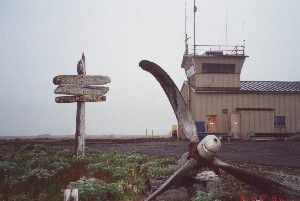Radiation Monitoring
Disclaimer: The PDF's below are considered archived and exempt from meeting the WCAG 2.1 Level AA accessibility standards. If you require accessibility assistance with any of the PDFs below, please email amqa-data-requests@alaska.gov
Radiation Monitoring Program (RadNet)
Radiation Monitoring
The Air Monitoring Group participates in EPA's Nationwide Environmental Radiation Monitoring (RadNet) Program. DEC staff maintain radiation monitoring equipment in Fairbanks and Juneau that produce near real-time data and collect filter-based samples for laboratory analysis. A site in Anchorage also collects real-time data and filter-based samples, but is not operated by DEC.
Data from these sites is available through EPA's RadNet data system:
Radiation Information and Health Effects
- EPA Radiation Protection Programs
- EPA National Air and Radiation Environmental Laboratory (NAREL)
- US Department of Energy
- US Nuclear Regulatory Commission
- International Atomic Energy Agency
- Radiation Facts and Health Effects
- Radiation and Pregnancy
- Sheltering in Place During a Radiation Emergency
- Radiation and Health Physics
- University of Michigan Student Chapter of Health Physics Society Centers for Disease Control and Prevention
- US EPA RadNet
- The nationwide RadNet system monitors the nation’s air, drinking water, precipitation, and pasteurized milk to determine levels of radiation in the environment. RadNet sample analyses and monitoring results provide baseline data on background levels of radiation in the environment and can detect increased radiation from radiological incidents. There are RadNet air monitors in Fairbanks, Anchorage, and Juneau.
- Energy Citations Database (1948 – Present)
- Energy Citations contains bibliographic records for energy and energy-related scientific and technical information from the Department of Energy (DOE) and its predecessor agencies, the Energy Research & Development Administration (ERDA) and the Atomic Energy Commission (AEC). The Database provides access to DOE publicly available citations from 1948 through the present, with continued growth through regular updates.
- DOE Information Bridge
- The Information Bridge provides an open source to full-text and bibliographic records of Department of Energy (DOE) research and development reports in physics, chemistry, materials, biology, environmental sciences, energy technologies, engineering, computer and information science, renewable energy, and other topics. The Information Bridge consists of full-text documents produced and made available by the Department of Energy National Laboratories and grantees from 1995 forward.
Radiation Contacts
Alaska Department of Health
US Environmental Protection Agency, Region 10
US Nuclear Regulatory Commission
- Incident Response Operations Center
- Emergency reporting of accidents, loss, theft, or damage of radioactive materials
- Collect calls are accepted. Calls are recorded.
- Phone: 301-816-5100
- Non-Emergency
- General concerns with radioactive materials
- allegation@nrc.gov
- Phone: 800-695-7403
Alaska Radiation Studies
| Date | Title and Document Download |
|---|---|
| 11/1/1997 | Radionuclides in the Arctic Seas from the Former Soviet Union: Potential Health and Ecological Risks (PDF 10.1M) |
Fukushima Radiation
Amchitka Radiation

Former Amchitka Airport Tower, Amchitka Island, Alaska
Mission Statement
Ensure the people of Alaska will not suffer adverse impacts to their health, or the environment due to the legacy of the underground nuclear testing carried out at Amchitka Island, Alaska, now or in the future.
Reports prepared in response to concerns about Amchitka Island
- Screening Risk Assessment for Possible Radionuclides in the Amchitka Marine Environment
- (US Department of Energy, National Nuclear Security Administration, Nevada Environmental Restoration Project, Environmental Restoration Division, Revision No: 0, October 2002)
- Modeling Groundwater Flow and Transport of Radionuclides at Amchitka Island's Underground Nuclear Tests: Milrow, Long Shot, and Cannikin
- US Department of Energy, National Nuclear Security Administration, Nevada Operations Office, DOE/NV/11508-51, Publication No. 45172, October 2002
- Included below:

 Indicates an external site.
Indicates an external site.